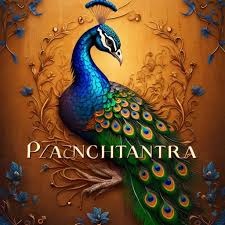The ancient Indian collection of stories, Panchatantra, is revered worldwide for its timeless wisdom, morals, and valuable life lessons. Originating in India over two thousand years ago, these fables encapsulate human virtues and flaws through the tales of animals. In today’s fast-paced, technology-driven world, the need to impart wisdom and moral values has never been more pressing. Thus, the concept of Panchatantra 2.0 emerges as a refreshing adaptation, bringing these ancient fables into the digital age with relevance, innovation, and modern appeal.
In this article, we will explore the essence of Panchatantra 2.0, its need, benefits, and potential impact on today’s society.
What is Panchatantra: Panchatantra 2.0
Origins of Panchatantra
The original Panchatantra is attributed to the ancient Indian scholar Vishnu Sharma. According to folklore, Sharma created this collection to educate the young princes of a kingdom who showed little interest in conventional education. Using animals as characters and embedding life lessons within their stories, he crafted narratives that were as entertaining as they were enlightening.
Structure of the Panchatantra
The Panchatantra is divided into five sections, each focusing on a specific aspect of life and human nature:
- Mitra-bheda – Discord Among Friends
- Mitra-labha – Gaining Friends
- Kakolookiyam – War and Peace
- Labdhapranasam – Loss of Gains
- Aparikshitakarakam – Acting without Thinking
These sections encompass themes such as friendship, diplomacy, trust, betrayal, and strategic thinking—timeless concepts that remain as relevant today as they were centuries ago.
Why Panchatantra 2.0
The Relevance of Ancient Wisdom in Modern Times
Today, children and adults alike are increasingly exposed to a fast-paced world where technology, social media, and entertainment dominate. Moral stories, once passed down through generations, are now at risk of being forgotten. However, the core lessons of the Panchatantra still resonate with many of the challenges we face today, such as ethical decision-making, cooperation, and empathy.
Bridging Generations with Panchatantra 2.0
As lifestyles change, so does the way we consume knowledge and entertainment. Panchatantra 2.0 serves as a bridge between generations, blending ancient wisdom with modern technology and storytelling techniques. The aim is to make these timeless lessons accessible and engaging for a new audience, enabling parents, teachers, and children to connect with the stories in a contemporary format.
Key Elements of Panchatantra 2.0
Panchatantra 2.0 is more than just a retelling of old tales. It incorporates elements that make it appealing, relevant, and adaptable to modern-day learning needs.
1. Digital Formats and Interactive Storytelling
Through apps, e-books, and interactive videos, Panchatantra 2.0 is designed to captivate digital-native audiences. These formats allow readers to engage with stories in ways that printed text cannot. Interactive storytelling features such as voice narration, animations, and touch-sensitive illustrations make learning fun and immersive.
2. Visual Appeal and Modern Language
To appeal to contemporary audiences, the characters in Panchatantra 2.0 are often reimagined with colorful illustrations and modern attire. The language is adapted for clarity, keeping the essence of the stories intact while making the morals clear and relatable.
3. Animated Series and Audio Stories
Audio and animated adaptations offer an entertaining way to introduce young audiences to the Panchatantra tales. These formats are especially valuable for early readers and young children, who can enjoy the stories without needing to read long paragraphs of text.
4. Curriculum Integration
Educators and parents are increasingly looking for values-based education resources. Panchatantra 2.0 can be incorporated into school curriculums, allowing children to learn moral values and critical thinking in an enjoyable, story-based format. Classroom activities can also involve discussions on the morals, ensuring deeper engagement.
5. Inclusion of Contemporary Morals and Scenarios
While traditional Panchatantra stories teach morals that remain relevant, Panchatantra 2.0 can address modern-day issues as well. For example, the updated stories could include lessons on digital ethics, online behavior, environmental awareness, and social responsibility, making it a versatile educational tool for today’s complex social landscape.
The Benefits of Panchatantra 2.0
Developing Emotional Intelligence and Social Skills
The Panchatantra fables encourage empathy, cooperation, and understanding, essential components of emotional intelligence. By seeing the consequences of actions in a story format, young readers and listeners learn valuable lessons about navigating social dynamics in a safe, hypothetical context.
Fostering Analytical and Critical Thinking
Many Panchatantra stories deal with themes like deception, strategy, and wit. In Panchatantra 2.0, these themes can encourage children to think critically and make informed decisions. The stories often require readers to consider multiple perspectives, teaching them the importance of foresight and planning.
Encouraging Ethical and Moral Decision-Making
In today’s world, children face complex moral choices early on. Panchatantra 2.0 provides a foundation for ethical reasoning, helping young readers differentiate between right and wrong, understand consequences, and appreciate the importance of honesty, integrity, and empathy.
How Panchatantra 2.0 Can Be Used
Educational Institutions
Teachers and school administrators can integrate Panchatantra 2.0 into their curriculum to teach core values in an engaging way. Using stories to discuss ethical dilemmas, teamwork, and the value of honesty creates an interactive classroom environment that facilitates learning beyond textbooks.
Parent-Child Interaction
Parents looking to foster a love of reading and moral education can use Panchatantra 2.0 as a bedtime storytelling tool or family reading time activity. With interactive digital options, parents and children can even explore the stories together, building a shared understanding of values and ethical thinking.
Corporate Training Programs
In the corporate world, training programs increasingly emphasize the need for emotional intelligence, ethical decision-making, and interpersonal skills. Panchatantra 2.0 stories can serve as an accessible, impactful way for trainers to discuss these topics in a more relatable context.
Panchatantra 2.0 in Action: Examples and Success Stories
Interactive Story Apps
Story apps like Panchatantra for Kids or Animal Kingdom Tales have modernized these age-old tales with animated illustrations, interactive games, and narration. These apps make it easy for parents and educators to introduce young children to the Panchatantra in an engaging way, while still preserving the story’s original morals.
Online Video Series
Streaming platforms and YouTube channels are producing animated video series of the Panchatantra stories, which are accessible to children worldwide. These videos often incorporate voice actors and dramatic music, capturing young audiences and making it easier for them to relate to the characters.
Classroom Storytelling Workshops
Some schools are adopting a storytelling workshop format, where children engage in storytelling, role-playing, and discussions around Panchatantra 2.0 tales. This hands-on approach helps students understand values in an experiential way, often through games, reenactments, and group discussions.
The Future of Panchatantra 2.0
Potential for Global Influence
While the Panchatantra is originally an Indian text, its universal themes of honesty, courage, and friendship have global appeal. Panchatantra 2.0 could influence educational systems worldwide, offering non-Indian audiences the chance to learn from these ancient tales. In the future, we may see more translated and culturally adapted versions.
Artificial Intelligence and Personalized Learning
The rise of AI in education opens doors for even more interactive versions of Panchatantra 2.0. Imagine an AI-powered app that could adapt stories and questions to the learner’s level and personality, making each tale’s moral lesson more tailored and impactful.
Expanding into Augmented Reality
Panchatantra 2.0 could take storytelling further through augmented reality (AR), allowing readers to engage with characters and story environments in a 3D setting. AR can make these ancient tales come alive in immersive ways, enriching the educational experience and deepening the impact of moral lessons.
Conclusion: Why Panchatantra 2.0 is a Timeless Gift for the Modern World
In a world where moral values and empathy are more critical than ever, Panchatantra 2.0 serves as a bridge between the wisdom of the past and the needs of the present. Through digital storytelling, modernized language, and engaging multimedia formats, these ancient tales can inspire children, educators, and families worldwide to reflect on life’s essential values. Panchatantra 2.0 reminds us that no matter how advanced society becomes, the timeless lessons of honesty, compassion, and wisdom remain foundational to building a better, more understanding world.


